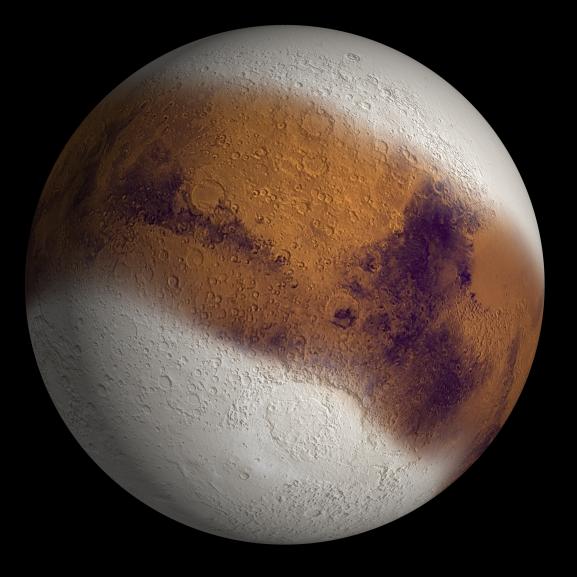Of all the features of Mars, its axial tilt is most similar to Earth. Mars’ tilt is 25 degrees, just a fraction away from the Earth’s 23.5 degrees. And because of this tilt, Mars has seasons, just like the Earth. Of course, since Mars takes twice as long as Earth to orbit the Sun, the seasons are twice as long.
Mars also has a very elliptical orbit. Because of this, the difference between its closest and most distant point along its orbit vary by 19%. This extreme difference makes the planet’s southern winters long and extreme. The northern winters aren’t as long or cold.
Astronomers know that the current tilt of Mars’ axis is just a fluke. Unlike Earth, the planet’s tilt has changed dramatically over long periods of time. In fact, astronomers think that the wobble in the tilt might help explain why vast underground reservoirs of water ice have been found at mid-latitudes, and not just around the planet’s poles. It’s possible that in the distant past, Mars was tilted at a much more extreme angle, and the ice caps were able to grow across the planet. When the tilt was less extreme, the ice remained, and was covered by a layer of dust.
Researchers have developed a model that accounts for the advance and retreat of the subsurface Martian ice sheets over 40 ice ages and 5 million years.
Here’s an article that explains how scientists track the Martian equator in the past. And the lopsided ancient oceans on Mars are explained by its tilt in the past.
Here’s some information about the tilt and seasons on Mars from MSSS. And the Wikipedia article about timekeeping on Mars.
Finally, if you’d like to learn more about Mars in general, we have done several podcast episodes about the Red Planet at Astronomy Cast. Episode 52: Mars, and Episode 91: The Search for Water on Mars.

